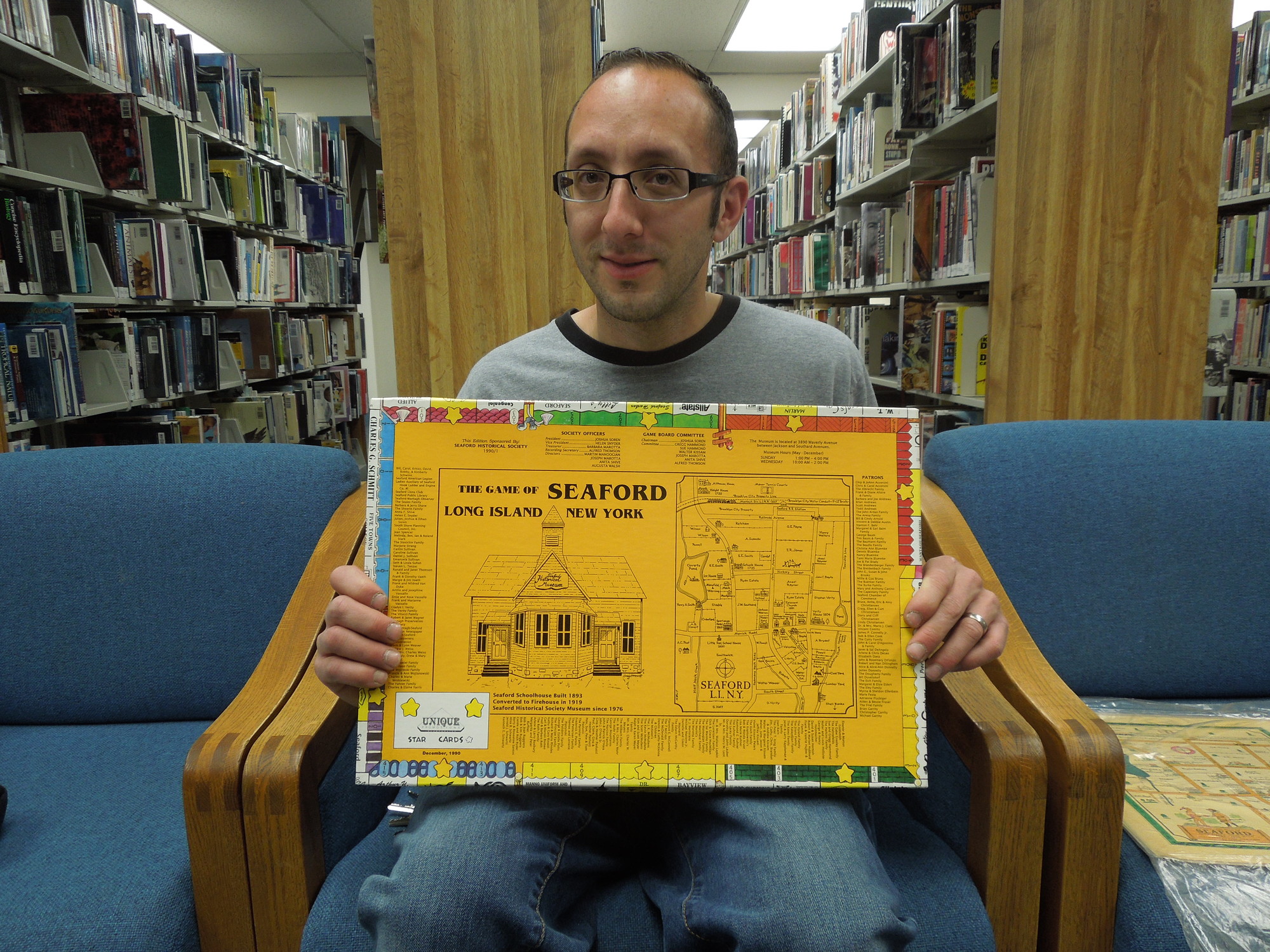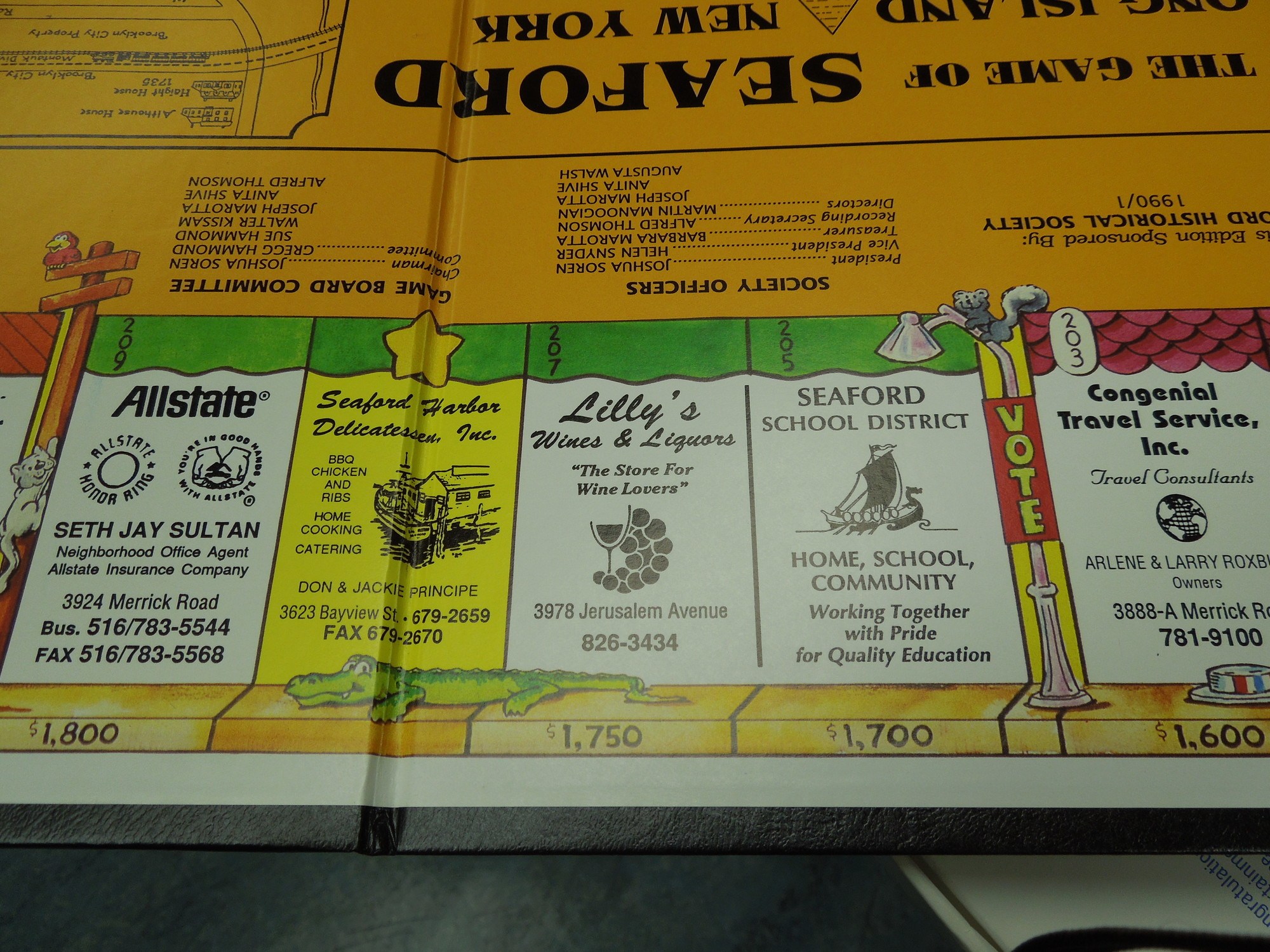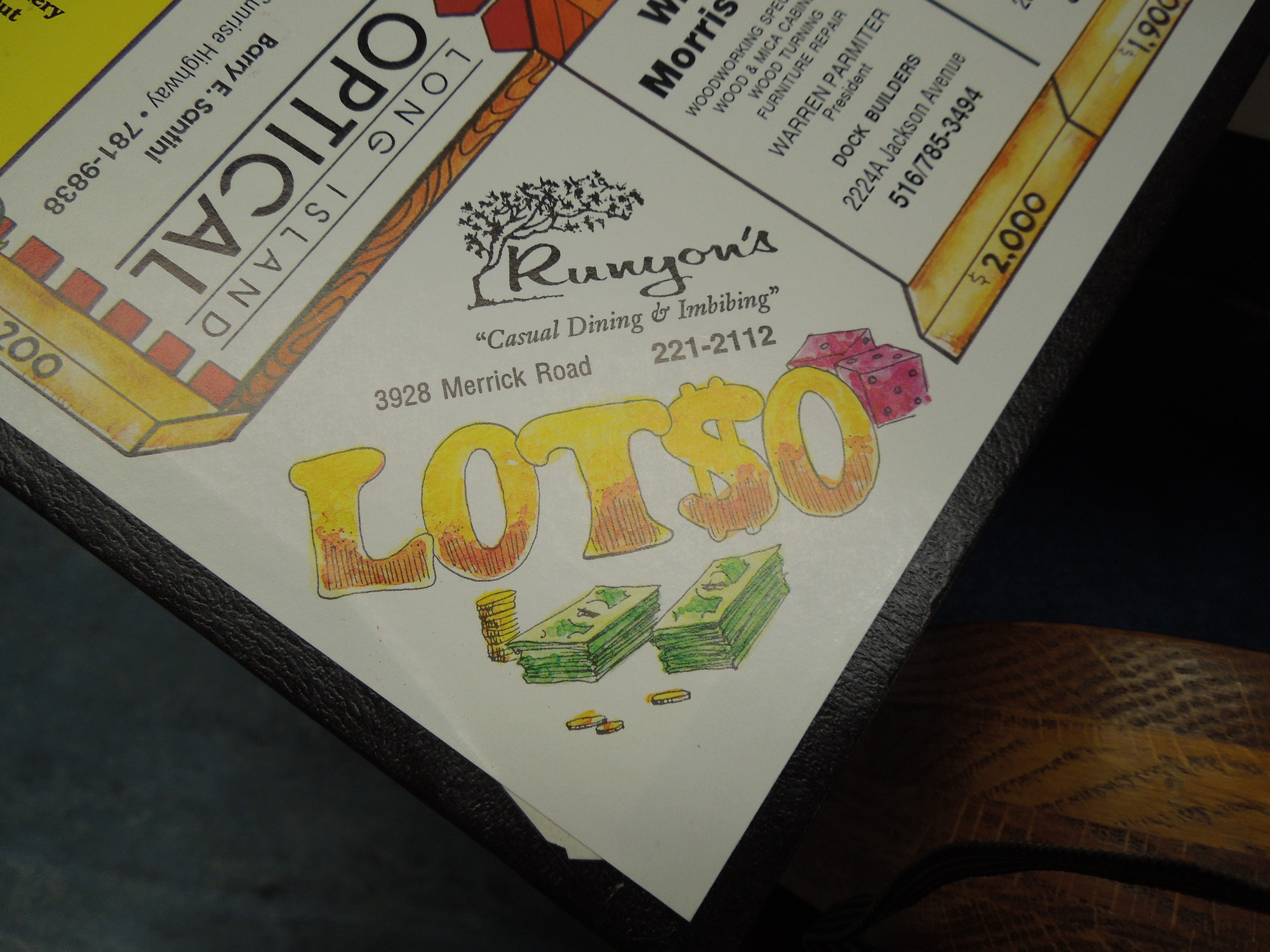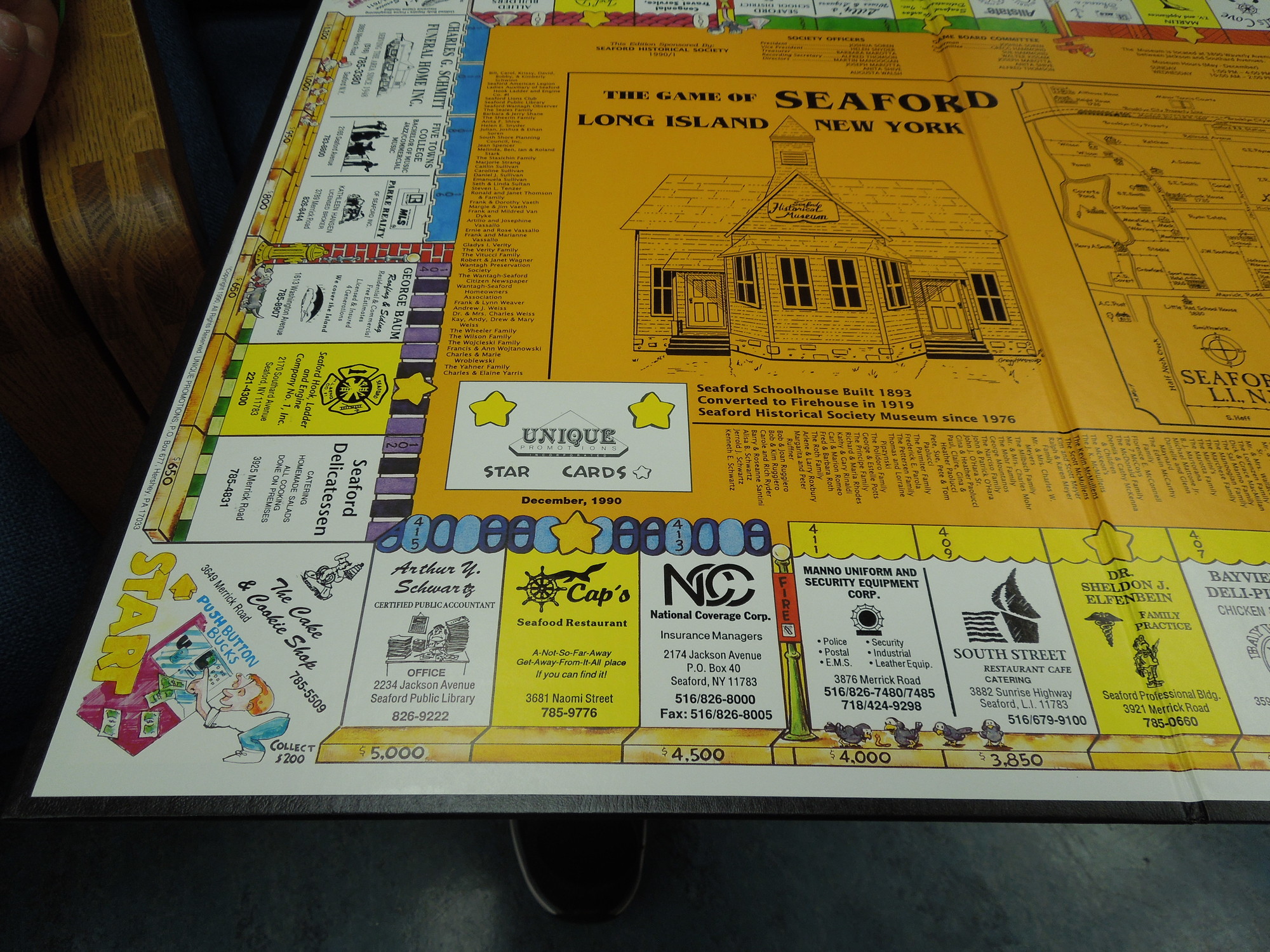Seaford game a trip down memory lane
Pass Go, collect $200. No it’s not Monopoly, it’s The Game of Seaford, Long Island, and an iteration of the famous Parker Brothers game where you can buy and sell local real estate instead of railroads, utilities and properties.
“The game looked cool and familiar,” Jon Orlick, a Wantagh resident, said. He found the board game at an estate sale in Seaford in March and thought, “it would be fun to play.” Orlick grew up on Wantagh Park Drive and attended Seaford schools.
“It looked familiar to me and I liked the nostalgia, the history about it,” he said.
The Game of Seaford, Long Island was created as a fundraiser for the Seaford Historical Society in 1990. “It was a money-making endeavor for the building,” said Joshua Soren, then-president of the Seaford Historical Society. He got the idea after seeing the game elsewhere and approached Unique Promotions, then of Hershey, Pennsylvania, to create one that would reflect the community of Seaford. “We sold the spaces on the board to businesses and community organizations,” Soren said.
The board is set-up like Monopoly, with each space owned by a Seaford business or institution, such as the Hook, Ladder and Engine Company No. 1 of the Seaford Fire Department, or the Seaford School District. You start at The Cake & Cookie Shop (now Fehn’s Cake & Cookie Shop) and instead of going to jail, it’s charity lock-up if you are unlucky enough to land at the space owned by the Tackapausha Museum and Preserve. But here you get to pay out for a good cause.
The game gives a picture of the community 25 years ago. Some businesses remain — Runyons, Marlin’s and Charles Schmitt Funeral Home, but others have not withstood the ravages of time, such as Five Towns College or Eagle Video.
And then there are the donors. Patrons had their names placed on the perimeter of the board’s interior to help raise funds for the Seaford Historical Society. It reads like a who’s who of Seaford — old timers and [then] newcomers. “We wanted to make sure individuals also had the opportunity to participate,” Soren said.
Additionally, the board committee members are listed — Soren, Greg Hammond, Walter Kissam, Joseph Marotta, Anita Shive, Alfred Thomson.
Players also learn a bit of Seaford history. The center of the board has an illustration of the Seaford schoolhouse, from 1893, which then became the firehouse in 1919 and the museum in 1976. There is also a map of the town, a composite of Seaford between 1862 and 1906.
“There’s been so much change in Seaford,” Orlick said as he ran his finger across the map. “There were only four properties.” While Orlick, who graduated from Seaford High School in 1994 has seen lots of changes in town, he said, “the map is amazing.”
Soren said the game was “pretty successful. Most people pre-ordered the game. I think people still have it.”
Seafordite Charlie Wroblewski said he had a copy of the game. And Judith Bongiovi, president of the Seaford Historical Society said “there is one at the museum, plus we have four covers of the game.”
“I didn’t know about it, but when I saw it, my interest was piqued,” Orlick said. “I intend to play it with my wife and daughter. They like it, but I like it best of all.”

 49.0°,
Fair
49.0°,
Fair 













